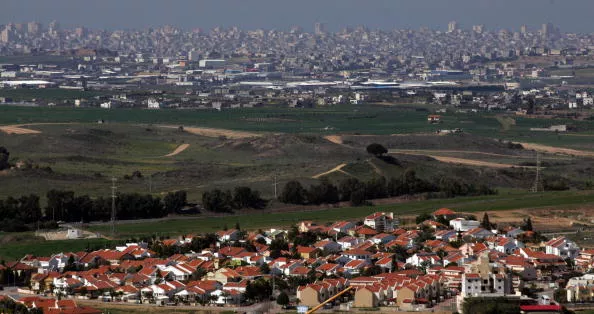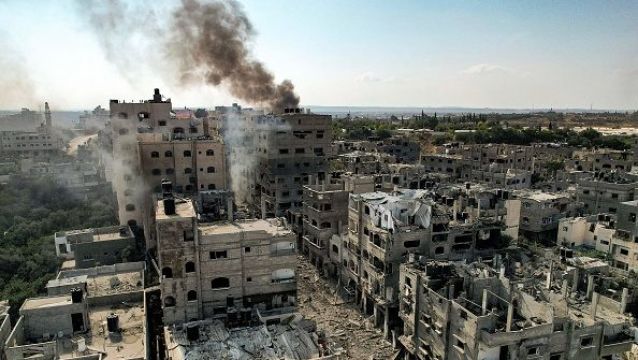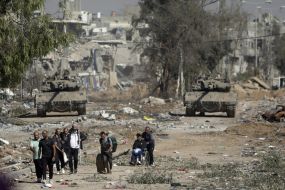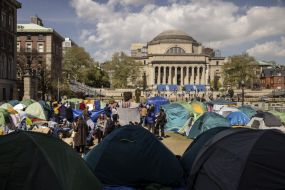Israel has imposed a total blockade on the Gaza Strip after the Islamist militant group Hamas sent its fighters across the border early Saturday, where they killed more than 1,300 Israeli civilians and soldiers.
The Palestinian Gaza Strip has been a frontline of conflict with Israel for decades and cut off from much of the outside world for 16 years. Here's a primer on the coastal enclave's recent history, and its long-running economic isolation.
Modern Gaza emerges through conflict
The Gaza Strip's boundaries were established in the wake of the 1948 war between the newly declared state of Israel and Arab countries, when Egyptian forces seized the sparsely populated 40km-long territory including Gaza City.
Egypt held Gaza for most of the following two decades, until Israel seized it during a 1967 war. It became a focal point of Palestinian uprisings that kicked off in 1988 and again in 2000.

With a comprehensive peace deal between Israel and the Palestinians seemingly out of reach, Israel evacuated all its settlers and soldiers from Gaza in 2005.
The blockade starts
After its unilateral exit, Israel imposed a temporary land, air, and sea blockade on Gaza, imposing curbs on exports and severely restricting who could access the territory.
Citing security concerns, the blockade became permanent from 2007 onwards after Hamas, which seeks the destruction of Israel, took control of the Gaza Strip, defeating fighters loyal to President Mahmoud Abbas in a brief civil war.

Egypt, which shares a 12km border with Gaza, has largely supported the blockade, viewing Hamas as a threat to its own stability.
Living conditions
Human Rights Watch has said Israel turned Gaza into "open-air prison", with Egypt's help, for the enclave's fast-growing population, which is currently put at 2.3 million people.
In a 2023 report, UN agencies estimated that 58 per cent of Gaza Strip residents required humanitarian assistance with 29 per cent of Gazan households living in extreme or catastrophic conditions, the top two tiers of severity, against 10 per cent in 2022.
The UN Office for the Coordination of Humanitarian Affairs (OCHA) says food assistance is required by 1.3 million people. More than 90 per cent of water in Gaza is unfit for drinking, the Palestinian Water Authority says.

Very few Palestinians get permits to visit relatives or friends in the West Bank, but Israel had recently increased the number of work permits for Gazans. For most Gaza residents, the Rafah crossing to Egypt is the only gateway out, but travellers must register weeks in advance, and the waiting list is huge.
In August, Egypt allowed 19,608 exits from Gaza, the highest number since July 2012, according to UN data. Israel allowed 58,606 exits, mainly for day labourers, 65 per cent above the monthly average in 2022, but 88 per cent below 2000 levels.
The economic impact
The long-running restrictions have severely limited Palestinian access to the Israeli labour market that had been a big source of employment prior to the 2000 uprising.
Gaza's unemployment rate is among the highest in the world, according to OCHA. The jobless rate stands at 46 per cent, and is higher still among youth at around 70 per cent, latest data from the Palestinian Central Bureau of Statistics says.

Per capita income is around a quarter the level in the Israeli-occupied West Bank, according to IMF estimates.
Israel has applied restrictions on imports into Gaza of goods which it has deemed could be put to military use, including concrete and iron bars. Ironically, ahead of the Hamas assault, this year saw a rise in imports. Likewise, Gaza's export market had looked set to record its highest level since 2007.
Total siege
On Monday, Israel announced a total siege, blocking the entry of food, fuel and water into Gaza and shuttering all crossing points. Egypt has also sealed its crossing into Gaza.

The enclave's only power plant has been switched off and hospitals are running out of fuel for emergency generators.
The International Committee of the Red Cross (ICRC) has appealed for fuel to be let in for the hospitals, but Israel has ruled this out unless hostages seized by Hamas are freed.
The UN emergency food agency has called for the creation of humanitarian corridors to bring food into Gaza, warning supplies could rapidly run out.







